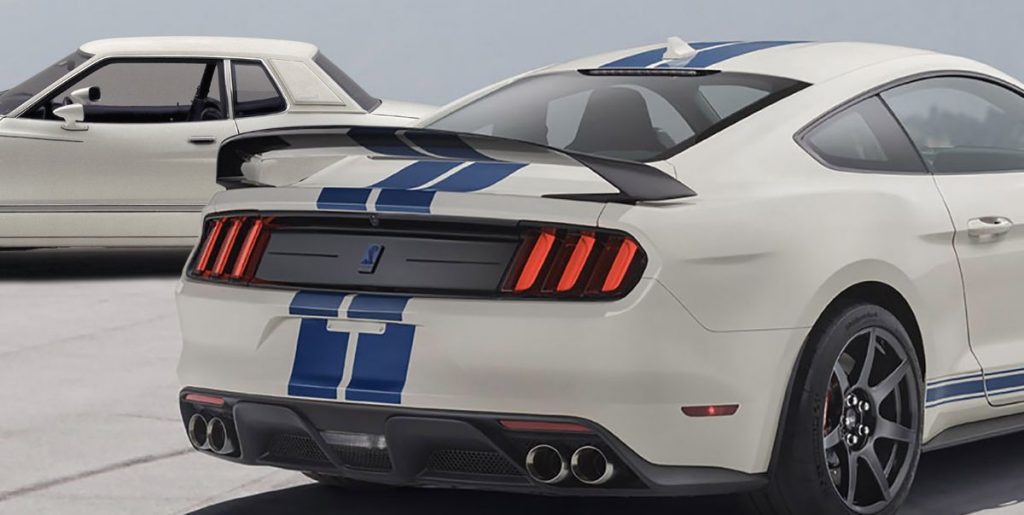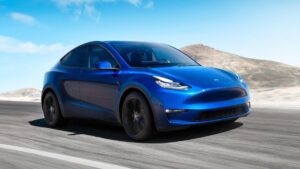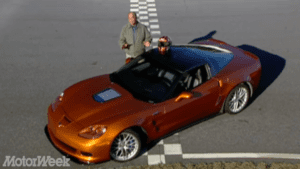The Ford Mustangs We Loved (and Loved to Hate) in Each Generation

Car and Driver
As the seventh-generation Mustang appears on the horizon, just about to make its debut in Detroit, our editors couldn’t help taking a look back at 57 years and six Mustang generations to commemorate their favorite and least favorite versions. Read on for the Worst and Best:
Advertisement – Continue Reading Below
We don’t like poser cars. Sorry, but the early-production base model of the first-generation Mustang was one. Sporty-looking yet meek, it was little more than the Falcon economy car that it was based on. The entry-level Mustang slow-walked through life courtesy of a sleepy 170-cubic-inch, 101-hp inline-six and a three-speed manual transmission that lacked the convenience of synchromesh on first gear—making for a gear-crunching wince fest when driving in the city. Its soft suspension, slow and heavy steering, and weak drum brakes were best suited for trundling down to the local A&W for burgers rather carving up back roads or challenging Pontiac GTOs at stoplights. But at least it looked cool. —Rich Ceppos
It would be easy to say that every first-generation Mustang was the best Mustang because America fell hard for the original pony car the moment it was launched on April 17, 1964, at the New York World’s Fair. More than 418,000 Mustangs were sold in the first 12 months of production. Two versions, however, reared back and bucked their way into the hearts of enthusiasts. The first was the high-performance model equipped with the K-code hi-po 289-cubic-inch V-8, which made 271 horsepower at a lofty 6000 rpm. It came only with a four-speed manual transmission, a special handling package, and 15-inch wheels—which were way cool because they were painted black and were free of hubcaps. Beyond the hi-po, there was the other best first-gen Mustang: the close-to-a-race car GT350 (pictured), a fastback Stang muscled up by Shelby American with a stiff suspension, sticky tires, alloy wheels, and a version of the 289 that bellowed out a claimed 306 horsepower.—Rich Ceppos
I wrote this over Labor Day weekend, with a group of car-loving friends drinking beer in the room while I worked. When asked, “What’s the worst Mustang II?” several shouted out, “All of them.” One said, “What’s a Mustang II?” and then, on looking it up, said, “Oh man, that’s a terrible car.” I’ll attempt to mount a defense when we get to Best, but for worst, let’s say, the 1974 four-cylinder coupe, picked because of its combination of poor road presence—really, the coupes look like they’re sagging straight off the dealership floor, Ghia designed or not—and shabby 87-hp performance. Mostly, though, I’m picking the first year because it introduced a generation of Mustang that, while financially good for Ford, was spiritually bad for the pony’s self-esteem. Also, 1974 was the only year the Mustang was ever offered without a V-8 option, and that was just wrong. —Elana Scherr
Lee Iacocca had a dilemma in 1973: Keep growing the Mustang, which by that point was already approaching mid-size-car territory, or shrink it back down and offer something that addressed consumer fears about fuel mileage and the rising cost of living. The Mustang II is a great disappointment to performance-loving Ford fans, but Mustang is the only one of the pony cars to brag an unbroken line from introduction to present day, which it couldn’t have done if it had kept growing and gas guzzling like the Challenger and the Camaro. The Mustang II is also valuable as a source of easy, lightweight independent front suspension and rack-and-pinion steering for custom car builds, and many a show-winning Deuce or street rod benefited from Ford’s chassis choices. When it comes to best, I’m going to go with the 1978 King Cobra Mustang II. It was still slow, taking more than 10 seconds to get to 60 mph, but it came with a V-8, has some of the wildest hood graphics of any car save the Trans Am, and, perhaps best of all, signaled the end of its generation. —Elana Scherr
It was the best of times, it was the . . . no, it was just the worst. Amid the second fuel crisis of the 1970s, manufacturers did all they could to stretch a gallon of gasoline. For the Mustang, this meant a shrunken V-8. For the 1980 model year, Ford decreased the bore diameter of the 4.9-liter V-8 (more commonly referred to as the 5.0) to create the 4.2-liter. The horsepower output was so repulsive that Ford wouldn’t include it in the press materials. The 4.2-liter produced 118 horsepower, making it the least powerful V-8 Mustang ever to be produced. We never had the opportunity to test one, but rest assured, it wouldn’t have been impressive. —David Beard
The last of the Fox-bodies and the first car from the Special Vehicle Team (SVT) is arguably the best of the bunch, and with just 107 Vibrant Red hatchbacks built, it’s one of the rarest models conceived. (The one shown here was listed for auction on Bring a Trailer in 2021.) The 1993 Ford Mustang Cobra R was powered by a 235-hp 4.9-liter V-8, and SVT ensured measures were taken to make it a dedicated track car. The Cobra R made do without a radio, air conditioning, a rear seat, and gutted the rear carpet and sound deadening material. It also had manual windows, door locks, and mirrors. The bucket seats from the Mustang LX were used in place of the heavier Cobra seats, and when it was all said and done, a claimed 450 pounds were removed. But most of the weight would be added back in with strategic hardware such as larger brake rotors, strut tower and subframe bracing, stiffer springs, adjustable dampers, a larger radiator, and a power steering and engine oil cooler. The Cobra R would spawn again in 1995 and for the final time in 2000. —David Beard
When we compared the base 1994 Mustang against a contemporary Camaro, we said that the engine “drones somewhat reluctantly” and the shifter’s throws were “long and ponderous” and that “you will be unhappy to discover that the car’s live axle is easily led astray.” And those were some of the nicer sentiments. Today, a base Mustang is a respectable performance car in its own right, but in 1994 the V-6 Mustang existed mainly for rental fleets and as an upsell on wheels—drive one and you’d surely figure out how to afford a GT. Its engine’s specs (145 hp at 4000 rpm) read like they belong to a small diesel rather than a pony-car V-6, and this car wore possibly the saddest three-spoke wheels ever foisted on the car-buying public. How bad was it? Bad enough to lose a comparison test to a V-6 Camaro. But even that car could have been worse: It could have been an automatic. —Ezra Dyer
Ford sent out the Fox platform in a supercharged blaze of glory with the 2003 SVT Cobra, which brought a blown 390-hp V-8 and independent rear suspension to the party. Even though this Mustang still used a platform dating to 1979, the new hardware was good for a 4.5-second zero-to-60-mph time and a 12.9-second quarter-mile at 111 mph—legit numbers even today. The same goes for its 0.90 g of stick and ability to handle midcorner bumps without the rear end heading for the guardrail. Sure, you smashed your knuckles on the dash shifting to third, but such is the price of Fox-body greatness. So why is the 2004 model better than the 2003? Because you could get it in color-shifting Mystichrome paint, the ultimate early-2000s Mustang flex. —Ezra Dyer
Ford lovers rejoiced with the arrival of the fifth-generation Mustang in 2005. The fourth-gen model notwithstanding, Gen 5 was the first all-new Mustang since 1979. Based on the new D2C platform and with taut styling that simultaneously looked modern while recalling the sexy fastbacks of the Sixties, it was a great success. But Ford spent most of its money on the new platform and body. The engines were pretty much carryover, in particular the base model’s 4.0-liter V-6, which was borrowed from the Explorer, and traced its heritage to a 2.0-liter German V-6 from 1964. That base model needed 6.6 seconds to get to 60 mph, ambled through the quarter in 15.3 at 93 mph, and could muster a mere 114 mph, even with a manual. This generation got a useful mid-cycle refresh in 2010, so clearly the worst of the bunch are the pre-refresh cars with the hoary V-6. —Csaba Csere
Gen 5 Mustang GTs started out with a carryover V-8, a three-valve, 4.6-liter version of Ford’s “modular” V-8. It had 300 horsepower, which we would have killed for back in Gen 3, but was run-of-the-mill in 2005. But in 2011, the Mustang got the first “Coyote” V-8. Displacing 5.0 liters and gainfully employing double over head cams and four valves per cylinder, this jewel of an engine developed 412 horsepower and instantly elevated the GT’s performance. A couple of years later, Ford extracted 444 ponies from the Coyote and plugged it in a model called the Boss 302, which was a worthy successor to the 1969 original. Coupled with the Laguna Seca package, which upgraded the chassis, and revving to 7500, the Boss hit 60 in 4.2 seconds, scorched the quarter in 12.7 at 111 mph, and went on to 161 mph. It also cornered at 0.96 at stopped from 70 in 150. It is unquestionably the class of the fifth generation. —Csaba Csere
Cars being so generally good nowadays, there are no “worst” Mustangs. Even so, I don’t know why anyone would buy a Bullitt (pictured) or base EcoBoost. Ford wanted nothing to do with the movie Bullitt, making the cartoonish badging, retro wheels, and two color choices the least interesting kind of throwback at an uninteresting price. Re the EcoBoost, its lowball MSRP can’t excuse its featureless and profound dullness, and adding enough options to escape the ennui—like the High Performance package—puts one in the pecuniary orbit of the V-8. Which is where everyone should start, anyway. —Jonathon Ramsey
The greatest driver’s cars happen when engineers make the best compromises during development. The most thrilling driver’s cars for daily use on everyday roads require one compromise: manual transmissions. The Mustang Shelby GT350 was the majestic accumulation of such give-and-take. Ford put the 5.2-liter V-8’s shrieking diablerie right there in the name: “Voodoo.” That noise! The circuit suppleness! That Tremec! Those brakes! Unlike the GT500, the GT350 didn’t look like a threat to kith and kin. And if you stepped up to the 350R, Ford’s blacksmiths shod the horse in carbon-fiber shoes. Even legendary eponymous horse trader Carroll Shelby would have said, “Well, I’ll be.” We certainly did. More than once. —Jonathon Ramsey
Advertisement – Continue Reading Below



